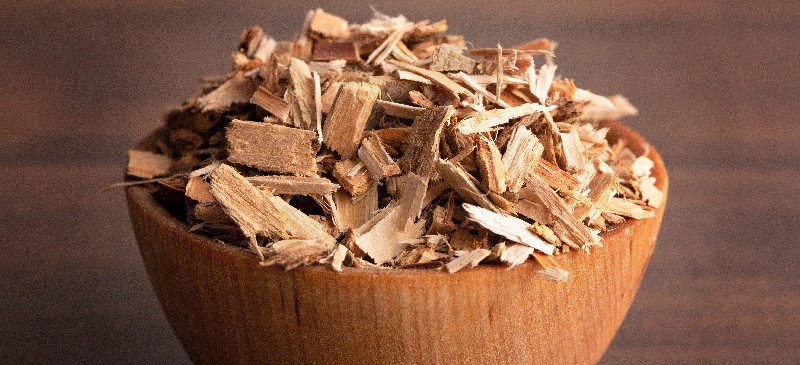Effective Natural Alternatives for Back Pain
In my previous Osteopathy blog, I talked about the relative merits of using either paracetamol or ibuprofen for back pain relief. For those people who would like to try natural alternatives to these drugs, today I’m going to highlight two natural painkillers which have some solid scientific evidence supporting their use for alleviating back pain.
Willow Bark
This is the bark obtained from the willow tree (funnily enough), and was the original inspiration for the discovery of aspirin in 1897. The ancient Egyptians and Greeks used willow bark to alleviate pain and reduce fever, and the Chinese have used it for over 2,000 years to treat pain and inflammation.
The active ingredient in willow bark is salicin, which is a natural precursor to aspirin. When salicin is ingested, it is converted in the body to salicylic acid, which has pain-relieving and anti-inflammatory properties.
A study in 2001 showed that willow bark was as effective as an anti-inflammatory drug (rofecoxib) at alleviating back pain. Another study in 2000 showed that willow bark helped back pain sufferers become pain-free.
There is even some evidence to suggest that willow bark may be less likely to cause stomach irritation than aspirin. For example, a review of clinical trials published in the Journal of Phytotherapy Research in 2014 found that willow bark extract was associated with a lower risk of gastrointestinal side effects than aspirin. However, as willow bark essentially works in the same way as NSAIDs, the same safety caveats apply around its potential role in stomach bleeding. As for a safe dosage, most studies have used doses of willow bark extract containing between 120-240 mg of salicin per day for the treatment of pain and inflammation.
2. Devil’s Claw
Devil's claw (Harpagophytum Procumbens) is a plant native to southern Africa and is known for its claw-like fruit that gives the plant its name. Devil's claw has been used traditionally to treat a variety of ailments, including arthritis, digestive issues, and skin conditions. Multiple studies have shown that devil’s claw may be effective at reducing back pain.
Like many remedies, the precise mechanism of action of devil’s claw is not fully understood, but is thought to include the following;
Inhibition of prostaglandin synthesis: Devil's Claw contains iridoid glycosides, such as harpagoside, which have been shown to inhibit the production of prostaglandins, which are mediators of inflammation and pain.
Inhibition of COX-2: Devil's Claw has been shown to inhibit the activity of cyclooxygenase-2 (COX-2), an enzyme that is involved in the production of prostaglandins.
Antioxidant effects: Devil's Claw contains various antioxidants, such as flavonoids and phenolic acids, which may help to reduce oxidative stress and inflammation.
Modulation of cytokine production: Devil's Claw has been shown to modulate the production of cytokines, such as tumor necrosis factor-alpha (TNF-α) and interleukin-6 (IL-6), which are involved in the inflammatory response.
Modulation of ion channels: Devil's Claw has been shown to modulate the activity of ion channels, such as the TRPV1 receptor, which is involved in pain perception.
Activation of adenosine receptors: Devil's Claw has been shown to activate adenosine receptors, which can help to reduce pain perception.
Like any supplement, minor side effects can potentially occur with taking devil’s claw, but interestingly it does not appear to have the same propensity to cause stomach bleeding as NSAIDs and Willow Bark.
As both willow bark and devil’s claw have their own potential side-effects and can interact with certain other medications, you should always do your own research and consult with your doctor before taking them.
In addition to the two natural compounds described above, there are other natural approaches to reducing back pain, for instance acupuncture and osteopathy.
Acupuncture
Although current UK guidelines don’t recommend acupuncture for low back pain specifically , it is a recognised option for people with chronic primary pain, and there is actually some evidence to suggest that acupuncture may be effective in relieving back pain. A number of systematic reviews and meta-analyses have been conducted on this topic, and although the results have been mixed, some larger studies have demonstrated that acupuncture was more effective than no treatment.
The mechanism of action for acupuncture in pain relief is thought to involve multiple pathways which include;
Release of endogenous opioids: Acupuncture has been shown to increase the release of endogenous opioids, such as beta-endorphin, enkephalins, and dynorphins, which can reduce pain perception and produce a feeling of well-being.
Modulation of the nervous system: Acupuncture may modulate the activity of the nervous system, including the peripheral, spinal, and central nervous systems, to reduce pain. For example, acupuncture may activate A-delta and C fibres, which can block pain signals from being transmitted to the central nervous system.
Anti-inflammatory effects: Acupuncture has been shown to have anti-inflammatory effects by modulating the production of cytokines and other inflammatory mediators.
Activation of the parasympathetic nervous system: Acupuncture may activate the parasympathetic nervous system, which can produce a relaxation response and reduce pain perception.
Stimulation of local blood flow: Acupuncture may stimulate local blood flow, which can promote tissue healing and reduce pain.
Osteopathy
Finally, osteopathy can also help with low back pain. There is evidence that spinal manipulations like those conducted by osteopaths and chiropractors may help reduce pain through a number of different mechanisms. This is believed to be by reducing the activity of pain receptors, stimulating the release of endorphins, reducing inflammation and improving the function of the nervous system.
Come and see me with your back pain problem. As well as being an osteopath, I am also a trained medical acupuncturist and I stock both devil’s claw and white willow bark tea for those patients who want to take a more natural approach to their pain relief.
If you are looking for an East Grinstead Osteopath please get in touch with:
Cliff Russell, Registered Osteopath
You can follow my blog here.


